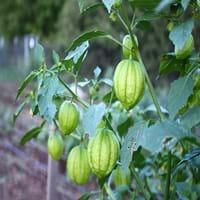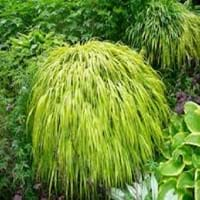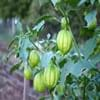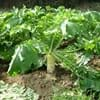Life Span
Annual
Perennial
Origin
Mexico, Caribbean, Central America
Japan
Types
Green Tomatillo, Purple Tomatillo
Not Available
Habitat
Cultivated Beds
meadows, Riverbanks, Wet Woods
USDA Hardiness Zone
6-9
5-9
Sunset Zone
A3, H1, H2, 1a, 1b, 2a, 2b, 3a, 3b, 4, 5, 6, 7, 8, 9, 10, 11, 12, 13, 14, 15, 16, 17, 18, 19, 20, 21, 22, 23, 24
1a, 1b, 2a, 2b, 3a, 3b, 4, 5, 6, 7, 8, 9, 10, 11, 12, 13, 14, 15, 16, 17, 18, 19, 20, 21, 22, 23, 24
Habit
Oval/Rounded
Clump-Forming
Flower Color
Yellow, Sandy Brown
Blue Violet
Flower Color Modifier
Bicolor
Bicolor
Fruit Color
Green, Purple, Yellow green
Purple
Leaf Color in Spring
Green
Yellow, Green, Light Green
Leaf Color in Summer
Green
Light Green
Leaf Color in Fall
Green
Orange, Yellow green, Orange Red
Leaf Color in Winter
Not Available
Green, Dark Green, Not Available
Leaf Shape
Lance shaped
Oblovate
Plant Season
Spring, Summer, Fall, Winter
Spring, Summer, Fall
Sunlight
Full Sun
Full Sun, Partial Sun, Partial shade
Growth Rate
Very Fast
Slow
Type of Soil
Clay, Loam, Sand
Loam
The pH of Soil
Neutral
Acidic, Neutral
Soil Drainage
Well drained
Well drained
Bloom Time
Indeterminate
Late Summer, Early Fall, Fall
Tolerances
Drought
Dry soil, Shallow soil
Where to Plant?
Container, Ground
Ground
How to Plant?
Seedlings
From Rhizomes
Plant Maintenance
Medium
Medium
Watering Requirements
Average Water Needs
Keep ground moist
In Summer
Drought Tolerant, Average Water
Lots of watering
In Spring
Moderate
Consistently
In Winter
Average Water
Adequately
Soil pH
Neutral
Acidic, Neutral
Soil Type
Clay, Loam, Sand
Loam
Soil Drainage Capacity
Well drained
Well drained
Sun Exposure
Full Sun
Full Sun, Partial Sun, Partial shade
Pruning
Remove all suckers, Remove wet foliage
Prune grass to maintain level, Prune if you want to improve plant shape
Fertilizers
All-Purpose Liquid Fertilizer
organic fertlizers
Pests and Diseases
Fungal Diseases
Not Available
Plant Tolerance
Drought
Shade areas, Shallow soil, Wet Site
Flowers
Insignificant
Insignificant
Flower Petal Number
Single
Single
Foliage Texture
Medium
Medium
Foliage Sheen
Matte
Matte
Attracts
Birds, Flea beetles
Ants, Beetles, Caterpillar
Allergy
Arthritis, Inflammation
allergic conjunctivitis, Asthma, Rash
Aesthetic Uses
Not Used For Aesthetic Purpose
Beautification, Ground Cover
Beauty Benefits
Good for skin
Not Available
Environmental Uses
Air purification
Provides ground cover, Shadow Tree
Medicinal Uses
Cancer, Diabetes, Energy, Opthalmic
Acne, Aging, Laxative
Part of Plant Used
Fruits
Leaves
Other Uses
Used for making green salsas and chilli sauce, Used in salads
Can be made into a herbal tea, Showy Purposes
Used As Indoor Plant
No
Sometimes
Used As Outdoor Plant
Yes
Yes
Garden Design
Edible, Herb / Vegetable
Container, Edging, Mixed Border, Rock Garden / Wall, Water Gardens
Botanical Name
PHYSALIS philadelphica
HAKONECHLOA macra 'Aureola'
Common Name
Green Tomato, Mexican Groundcherry, Tomatillo
Golden Japanese Forest Grass, Hakone Grass
In Hindi
Tomatillos
जापानी वन घास
In German
Tomatillos
Japanische gras
In French
Tomatilles
Forêt herbe japonaise
In Spanish
Tomatillos
forestales hierba japonesa
In Greek
Tomatillos
Ιαπωνικά γρασίδι δάσος
In Portuguese
Tomatillos
floresta grama japonês
In Polish
Tomatillos
Japoński las lato
In Latin
Tomatillos
Forest gramina Italica
Phylum
Magnoliophyta
Angiosperms
Class
Magnoliopsida
Monocots
Family
Solanaceae
Poaceae
Genus
Physalis
Hachanechloa
Clade
Angiosperms, Asterids, Eudicots
Angiosperms
Tribe
Physaleae
Not Available
Subfamily
Solanoideae
Arundinariinae
Number of Species
Not Available
Not Available
Season and Care of Tomatillo and Japanese Forest Grass
Season and care of Tomatillo and Japanese Forest Grass is important to know. While considering everything about Tomatillo and Japanese Forest Grass Care, growing season is an essential factor. Tomatillo season is Spring, Summer, Fall and Winter and Japanese Forest Grass season is Spring, Summer, Fall and Winter. The type of soil for Tomatillo is Clay, Loam, Sand and for Japanese Forest Grass is Loam while the PH of soil for Tomatillo is Neutral and for Japanese Forest Grass is Acidic, Neutral.
Tomatillo and Japanese Forest Grass Physical Information
Tomatillo and Japanese Forest Grass physical information is very important for comparison. Tomatillo height is 60.00 cm and width 90.00 cm whereas Japanese Forest Grass height is 30.50 cm and width 30.50 cm. The color specification of Tomatillo and Japanese Forest Grass are as follows:
Tomatillo flower color: Yellow and Sandy Brown
Tomatillo leaf color: Green
Japanese Forest Grass flower color: Blue Violet
- Japanese Forest Grass leaf color: Yellow, Green and Light Green
Care of Tomatillo and Japanese Forest Grass
Care of Tomatillo and Japanese Forest Grass include pruning, fertilizers, watering etc. Tomatillo pruning is done Remove all suckers and Remove wet foliage and Japanese Forest Grass pruning is done Prune grass to maintain level and Prune if you want to improve plant shape. In summer Tomatillo needs Drought Tolerant, Average Water and in winter, it needs Average Water. Whereas, in summer Japanese Forest Grass needs Lots of watering and in winter, it needs Adequately.





